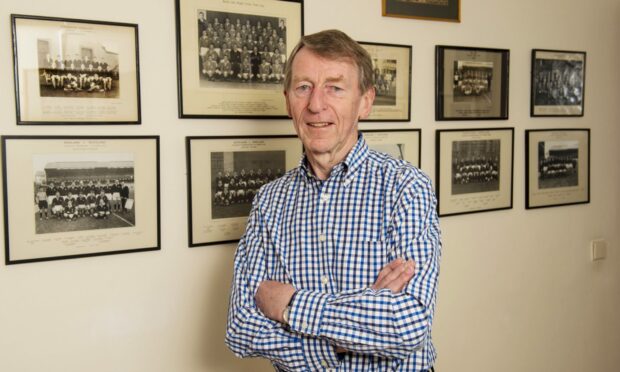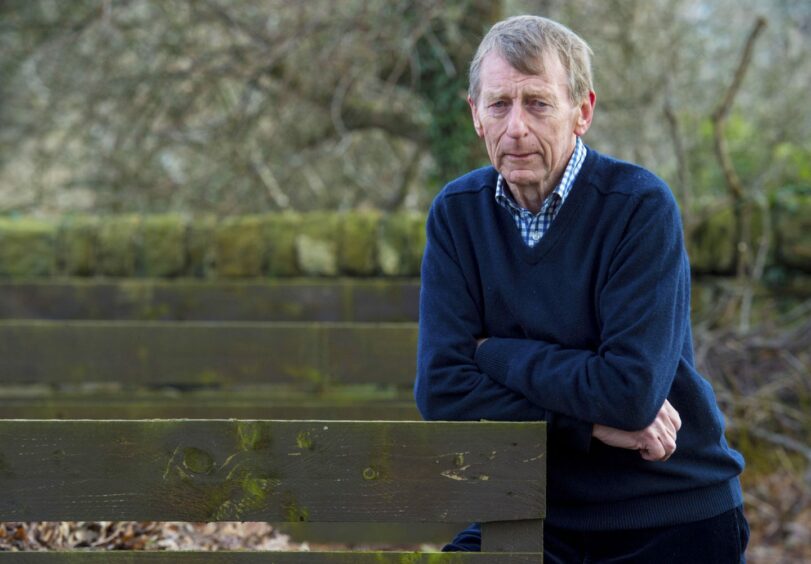Former Scotland and British and Irish Lions full-back Ken Scotland has died at the age of 86.
Scotland, who also represented his country at cricket, made his international rugby union debut in the 1957 Five Nations Championship against France.
The former Aberdeenshire player went on to make 27 appearances over the next eight years, and also played for Leicester Tigers, who named him in their ‘Team of the Century’ in 1999.
Scottish Rugby said it was “immensely saddened” by Scotland’s death, describing him as “a player ahead of his time, a true trailblazer.”
A statement added: “As a player, he changed the narrative of what was expected of a full-back, bringing counter-attacking elan to the traditional steadying influence of the last line of defence.
“Scotland, the great innovator, was the catalyst for some of the game’s greatest full-backs, such as JPR Williams and Andy Irvine, who were given licence to play the same exhilarating game that was Ken Scotland’s trademark.”
Scotland great Andy Irvine said: “Ken was undoubtedly one of the greatest players ever to grace the rugby field and was one of the nicest chaps you could ever meet.
“As a schoolboy at George Heriots, he was my ultimate hero and when I played senior rugby in the FP side, I was so fortunate to receive personal coaching on full back play from Ken.
“He had a brilliant rugby brain and such a lovely manner in how he would explain his thoughts and ideas to assist players. Not only a great player but equally great coach.”
Scotland won his 27 caps and was selected five times for the British and Irish Lions in an era when the sport was strictly amateur and spent many of his best years at Aberdeenshire RFC.
He spent a large paprt of his working life with the National Trust of Scotland, looking after grand dwellings and majestic properties.
As a consequence, he played for more than 30 different teams across Britain, from Heriot’s FP to Cambridge University and Ballymena to Lurgan and Leicester, as well as Aberdeenshire.
He made 89 appearances for Aberdeenshire – more than any other side he represented.
Scotland and his wife Doreen moved into a flat in the Rosemount area of the Granite City and he started in his new role with Alexander Hall & Sons, the major all-trades building contractors in the north of Scotland.
A keen cricketer, he soon made himself available for Saturday games at Aberdeenshire CC and was regularly in the thick of the action at Mannofield as a wicket-keeper batsman. And he made a sufficiently positive impression to be capped for his country in the summer game.
In his autobiography, Scotland wrote about his time playing rugby for Aberdeenshire, recalling: “During my six or seven seasons with Aberdeenshire, I had the privilege of meeting many players at their best.
“This was especially true of away games where, inevitably, either the quality or the quantity of the team left much to be desired.
“I must not leave you with the impression that the Aberdeenshire of the mid-sixties was a disaster area.
“My memories are of great enjoyment, both on and off the field, and also of great admiration for the small and enthusiastic nucleus of officials and players who helped provide the continuity from one generation of players to the next.”
Scotland was involved in the Lions tour of Australia and New Zealand in 1959, which stretched from May to September and featured a staggering schedule of 33 matches, with the tourists winning 27 and losing six.
In 1964 he captained the North and Midlands squad which faced the All Blacks at Linksfield in Aberdeen.


Conversation